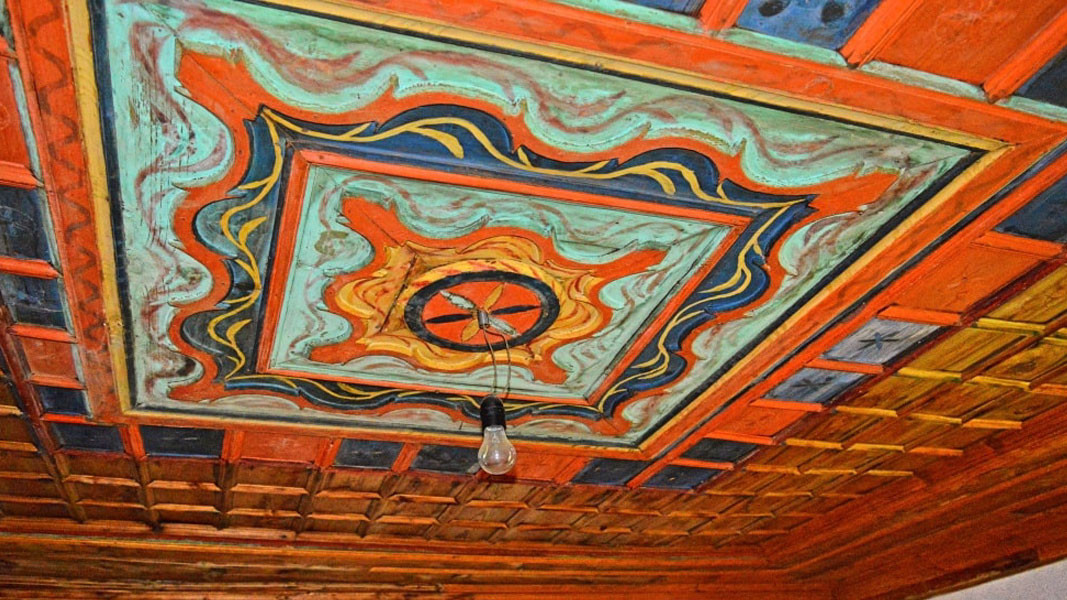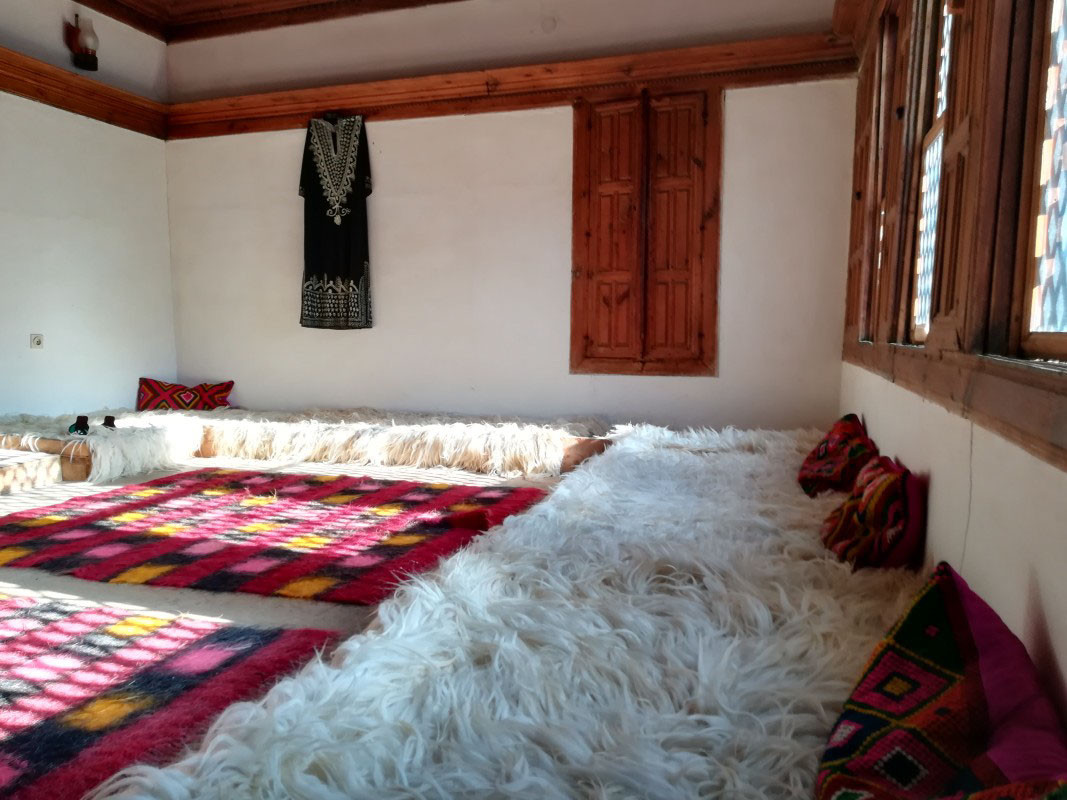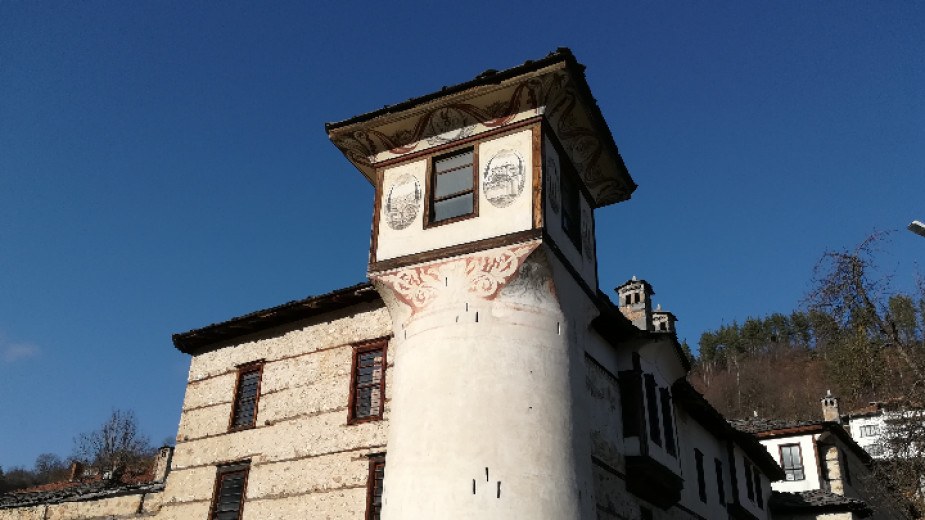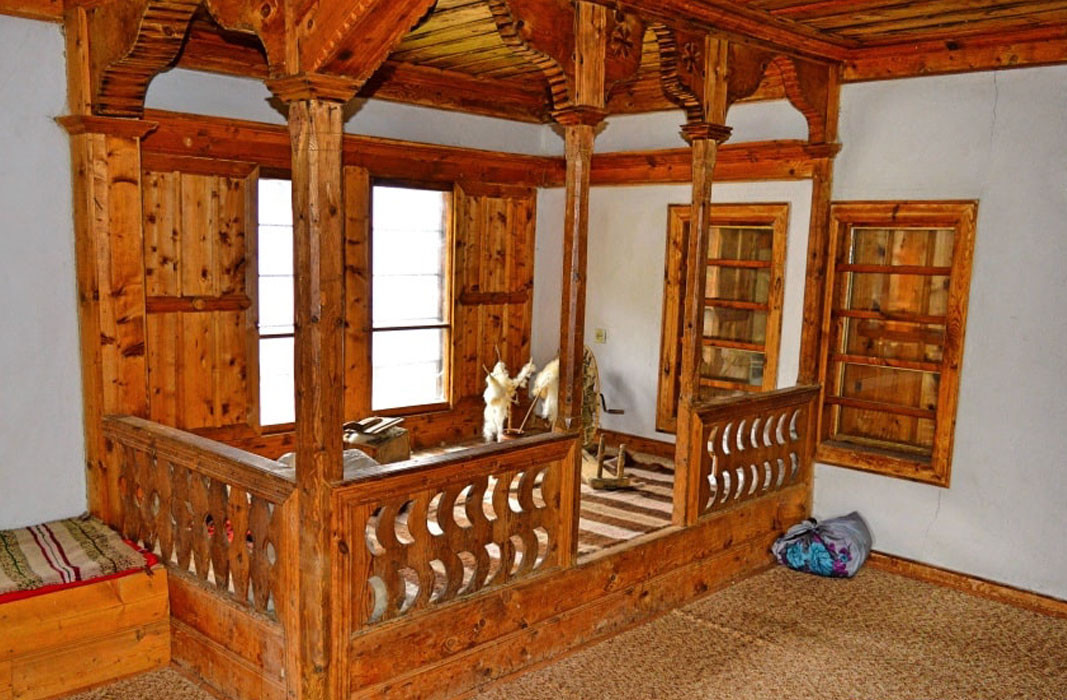Agushevi Konatsi is an exceptional ensemble of residential and farm buildings, which together form the largest family castle of the medieval type in the Rhodopes. The residence is located in the center of the village of Mogilitsa, on the banks of the Arda River.
Three Bulgarian craftsmen built the complex in the early 19th century for the then local ruler Agush Agha and his three sons. The first part of the complex was completed in 1825 and the second in 1843. The latter is indicated by an inscription on a stone slab above the entrance of one of the buildings.

Six generations lived in the “konak” (residence) until 1949, when the family was displaced by the communist regime in central and northern Bulgaria and Agushevi Konatsi became state property. But in 2000, the state returned the estate to the heirs of Salih Agha (grandson of Agush Agha). The monuments of national importance have been restored and turned into an ethnographic museum.

Tour guide at the complex Eli Andreeva welcomes visitors at the large gates of the residence.
"The Agushevi Konatsi is a complex comprised of several buildings. There are two main residential buildings, as well as a separate section for the workers. There are three courtyards, each with a well. The total area is 3266 square meters. The building has 221 windows. The doors are 86 and are still the original ones everywhere; even some of them still have their locks working smoothly to this day. There are 24 chimneys as there is a fireplace in each room.

The family of Agush Agha was well educated. They traveled frequently and traded and spoke foreign languages. They owned more than 12,000 sheep grazing on the slopes of the Rhodope Mountains in the summer and near the Mediterranean Sea in winter – something typical of this region of Bulgaria."
The house and yards are in perfect harmony with the wonderful Rhodope nature and scenery. The face of Agushevi Konatsi is oriented towards the sunrise and is characterized by great uniqueness and beauty.

Large spaces – huge rooms and wide corridors are characteristic of this architectural complex. Eli Andreeva introduces us to the first room on the ground floor – a wide space with entrances to several rooms:
"Two of the premises are cellars. In a deep pit they used to place the sheep cheese to ripen and in the other basement they stored butter and milk. The thick stone walls keep the temperature low throughout the year."

The family lived on the second floor. The rooms here are similar, but with small differences. There is a fireplace and wardrobes in each room. Another characteristic thing is the presence of “hammam” or bath in the rooms. Some rooms are also equipped with a internal toilet, which was a luxury at the time.

 The castle has a third floor. The family used to welcome guests and merchants there. On this floor one can see a room that accommodated the more important guests. Trade issues were discussed and important business decisions were made there. The interesting thing about this room is that it has a hiding place from where conversations could be heard as the door is masked behind shelves.
The castle has a third floor. The family used to welcome guests and merchants there. On this floor one can see a room that accommodated the more important guests. Trade issues were discussed and important business decisions were made there. The interesting thing about this room is that it has a hiding place from where conversations could be heard as the door is masked behind shelves.
The complex also includes a round tower with a small colorful room at its top. The residence is considered one of the biggest achievements of Bulgarian architects of the time. Due to the impressive appearance, Agushevi Konatsi are often compared to a late medieval castle as the architectural complex has no analogue on the Balkan Peninsula.
English: Alexander Markov
Photos: wikipedia.org, Bozhidar Cholakov and archiveChairski lakes are a protected area in the Western Rhodopes, known for their naturally formed landslide lakes. They are covered in a thick carpet of peat, surrounded by green meadows and centuries-old spruce forests. The lakes are located 19..
The trips of Bulgarian citizens abroad in August 2024 were 903,400, or 8.3% more in comparison to August 2023, the National Statistical Institute has reported. Trips for the purpose of rest and excursion increased in August by..
Since the beginning of the year, 10.7 million foreigners have visited Bulgaria, Rumen Draganov, director of the Institute for Analyses and Evaluations in Tourism, told BNR. This represents a 5% increase over last year. According to Rumen..

+359 2 9336 661
